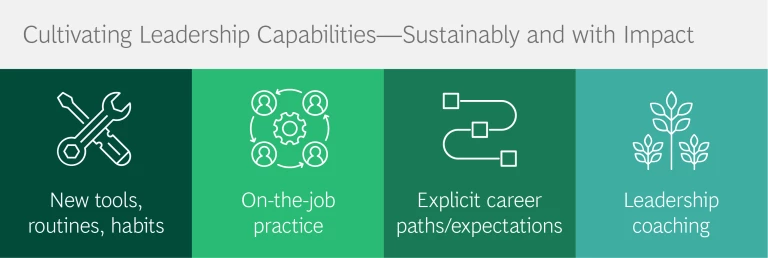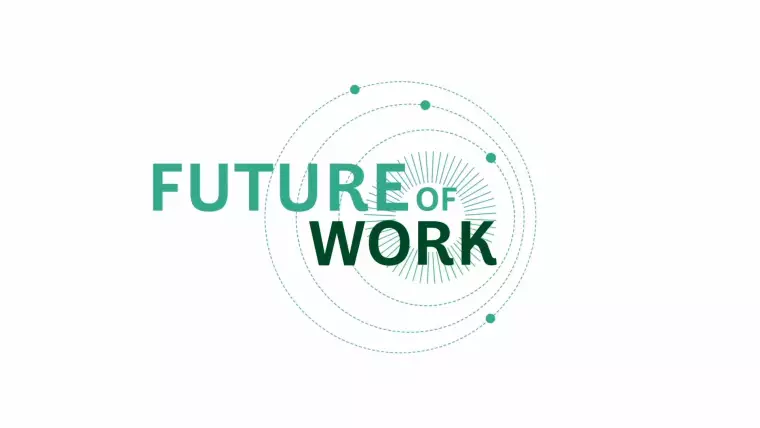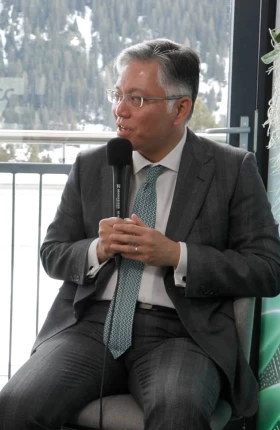A Leadership Strategy for Putting Leaders to Work
To develop the next generation of leaders, BCG uses a “design for adoption” methodology, grounded in cutting-edge behavioral science. This leadership strategy helps people build new capabilities every single day and adapt their behaviors within the context of daily routines.
BCG’s Approach to Leadership Development
BCG’s leadership development consulting shines a light on what makes certain leaders excel while others languish—and then incorporates those best practices into the flow of daily work to foster inclusive leadership. Our approach to leadership development is both highly operational and tightly linked to value creation:
- We start by pinpointing the two or three capabilities leaders need in order to fundamentally change the performance trajectory of the organization.
- Next, we leverage real-world tools and solutions that can be incorporated into leaders’ daily and weekly routines. It’s not leadership development training; it’s targeted executive coaching that changes how people show up and lead every day at work.
- Finally, we shape the context in which leaders operate—such as navigating the org chart, establishing effective governance, and rethinking which metrics are tracked and rewarded—to ensure that the organizational culture and leadership development agenda are mutually reinforcing.
In this way, leaders learn how to become great within the context of their daily work—using a growth-oriented, purpose-driven, and sustainable approach that pays dividends over their entire career.
Featured Client Work in Leadership Development


There is compelling evidence that shows employees can be just as productive working without the former constraints of time and location. Business leaders have the opportunity and imperative to intentionally design the future of work to unleash a new wave of productivity.
Explore BCG's expertise on the Future of Work
BCG’s Leadership Development Toolkit
Leadership development matters so much because the actions and attitudes of leaders drive performance in several ways: improving employee engagement, enhancing productivity, and cultivating an innovative and inclusive business culture. BCG’s leadership development consulting deploys a full spectrum of solutions to help companies shape the leaders they need and drive business growth.

- Frontline-Leader Enablement uses our innovative “design for adoption” approach to build leadership muscle among frontline leaders. By implementing practical daily routines and using simple tools to practice leadership at work, frontline leaders not only develop skills that have a direct and meaningful impact on colleagues, customers, and business results, but also play a role in coaching others.
- Executive Coaching helps leaders identify optimal behaviors, recognize what gets in the way of adopting these behaviors, and reinforce new ways of working that will drive strong results for the business. A cadre of prominent former senior executives who have led large-scale transformations, now BCG senior advisors and certified coaches, share battle-tested methodologies with leaders undertaking change.
- BCG’s Leadership & Talent Enablement Center helps companies develop inclusive leadership, build a stronger talent pipeline, and implement continuous learning strategies to close critical skill gaps.
Meet BCG’s Leadership Development Consulting Experts


Agile for Leaders
The CEO Agenda
BCG’s Featured Insights in Leadership Development
















